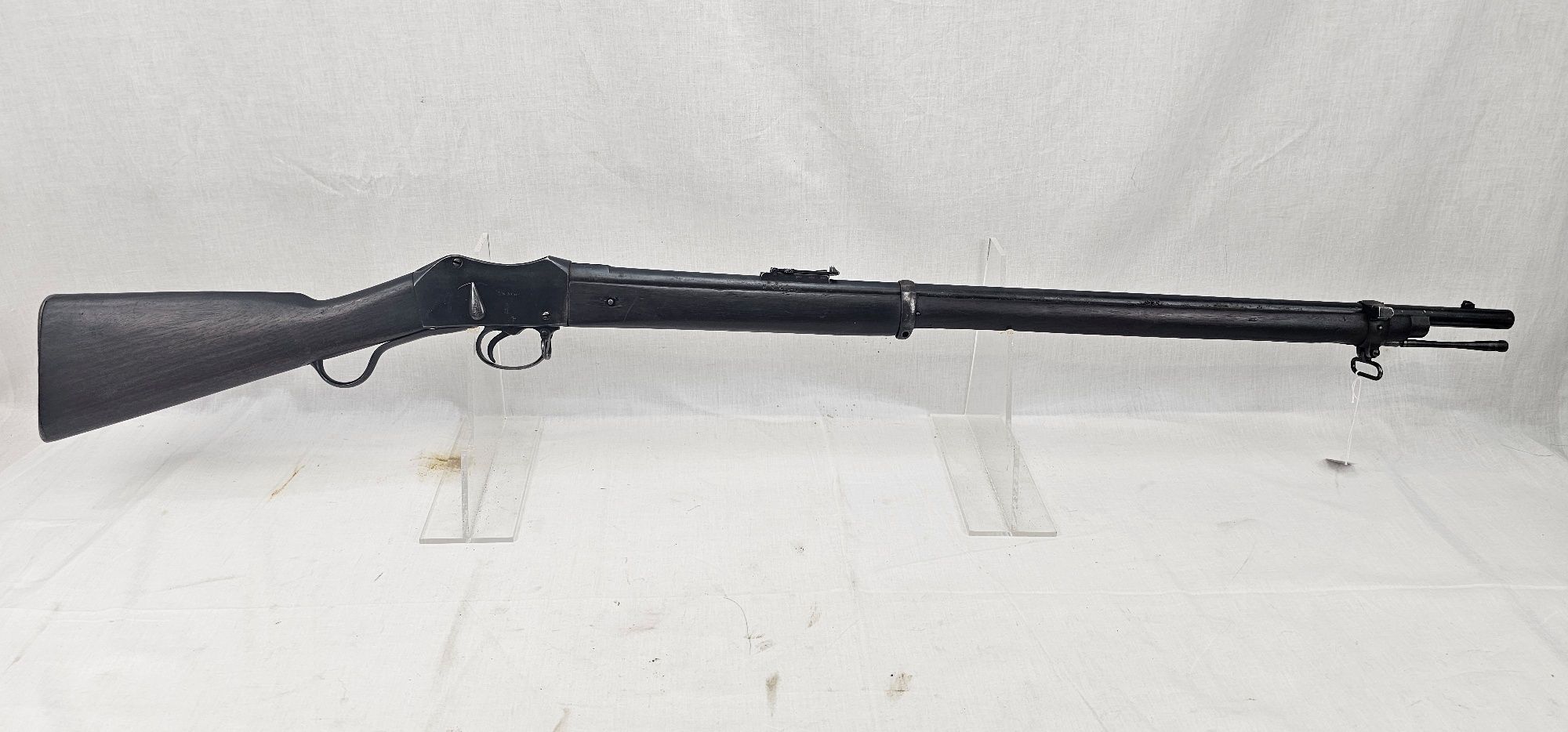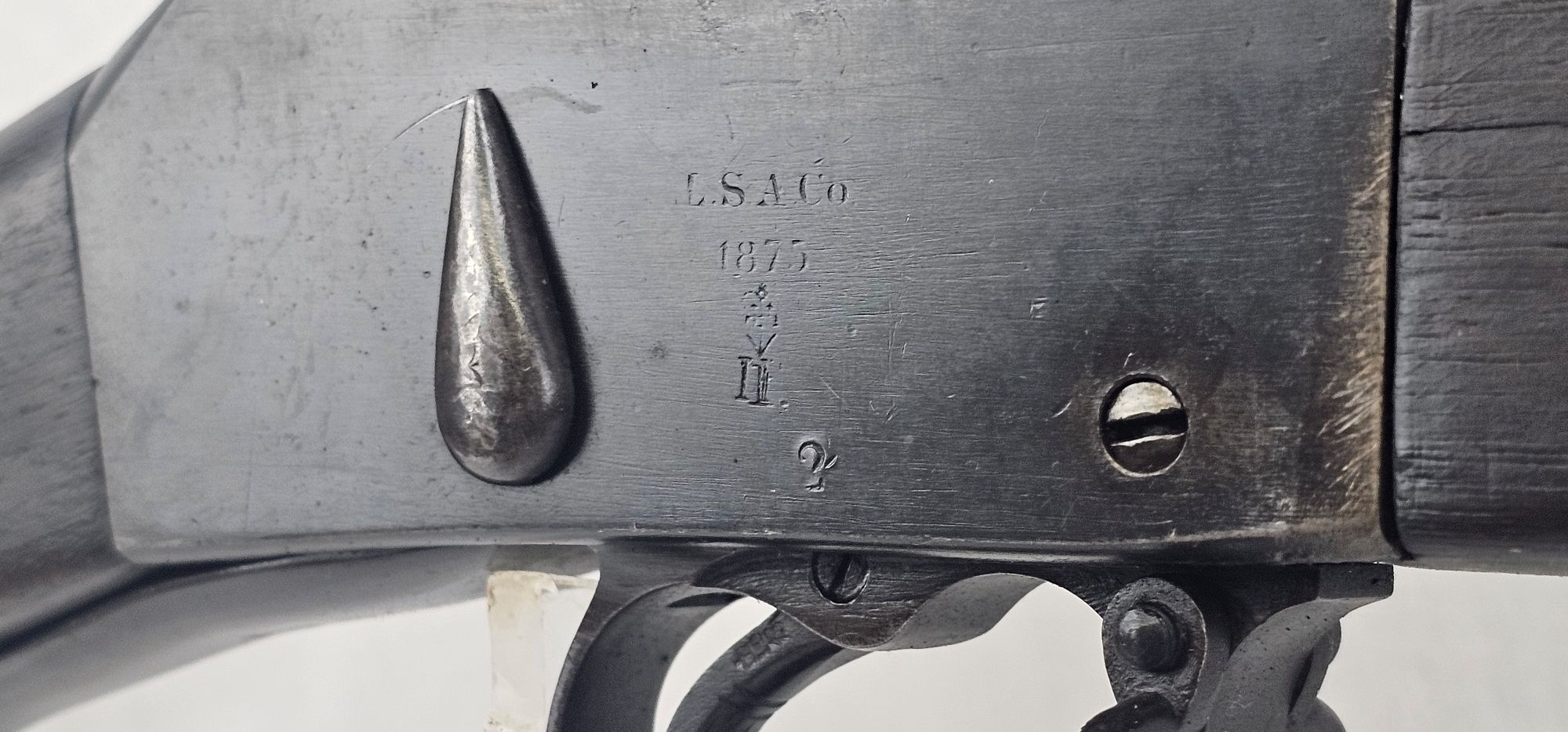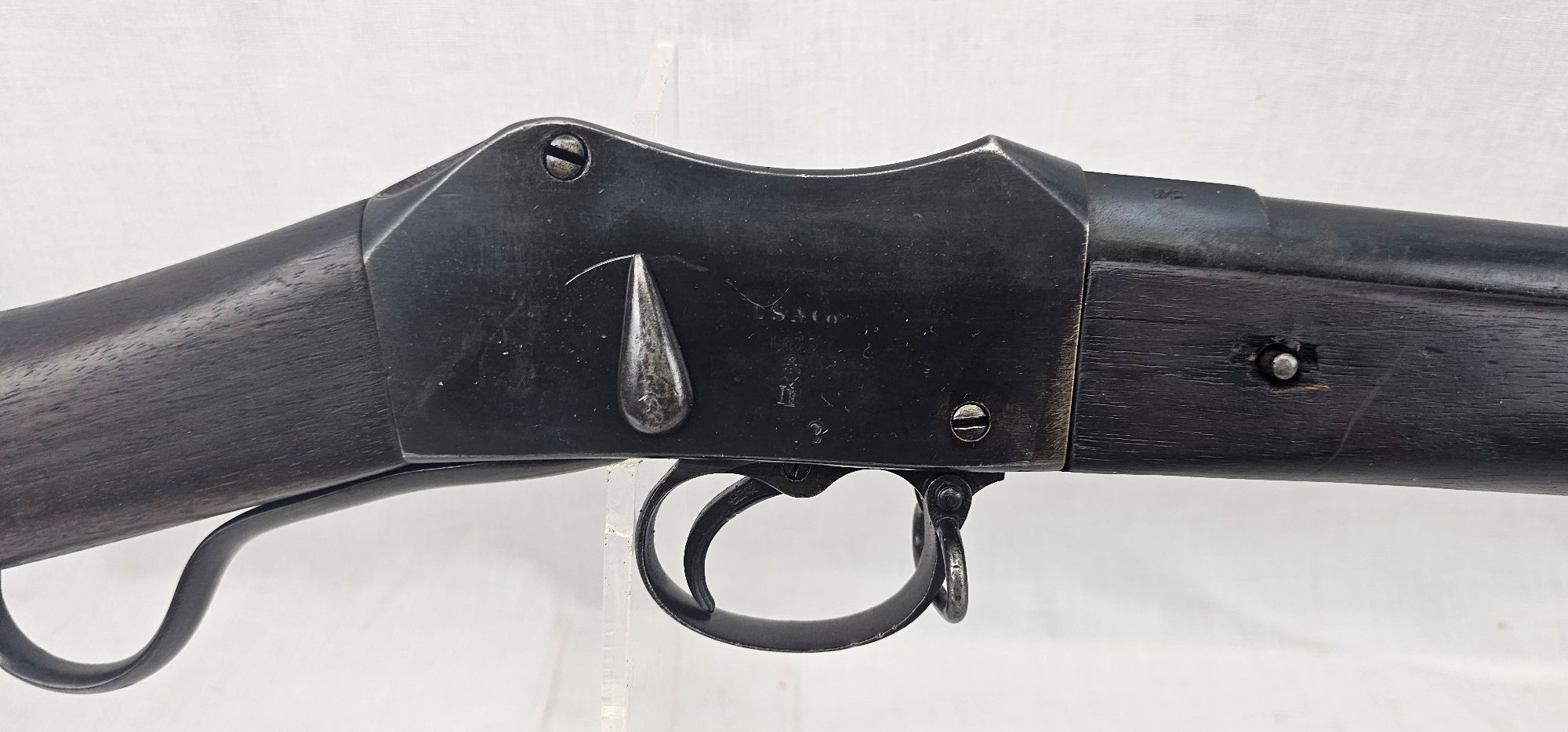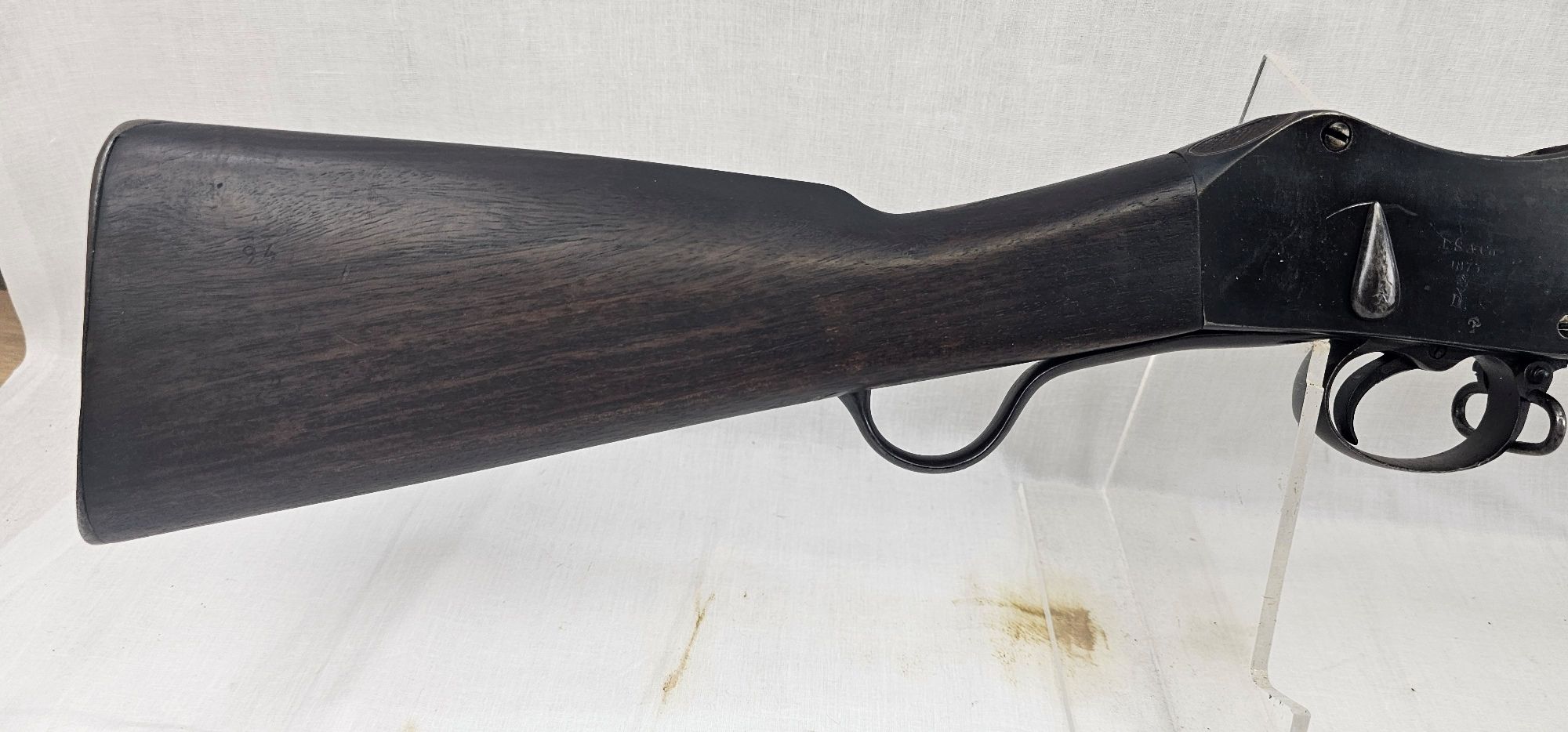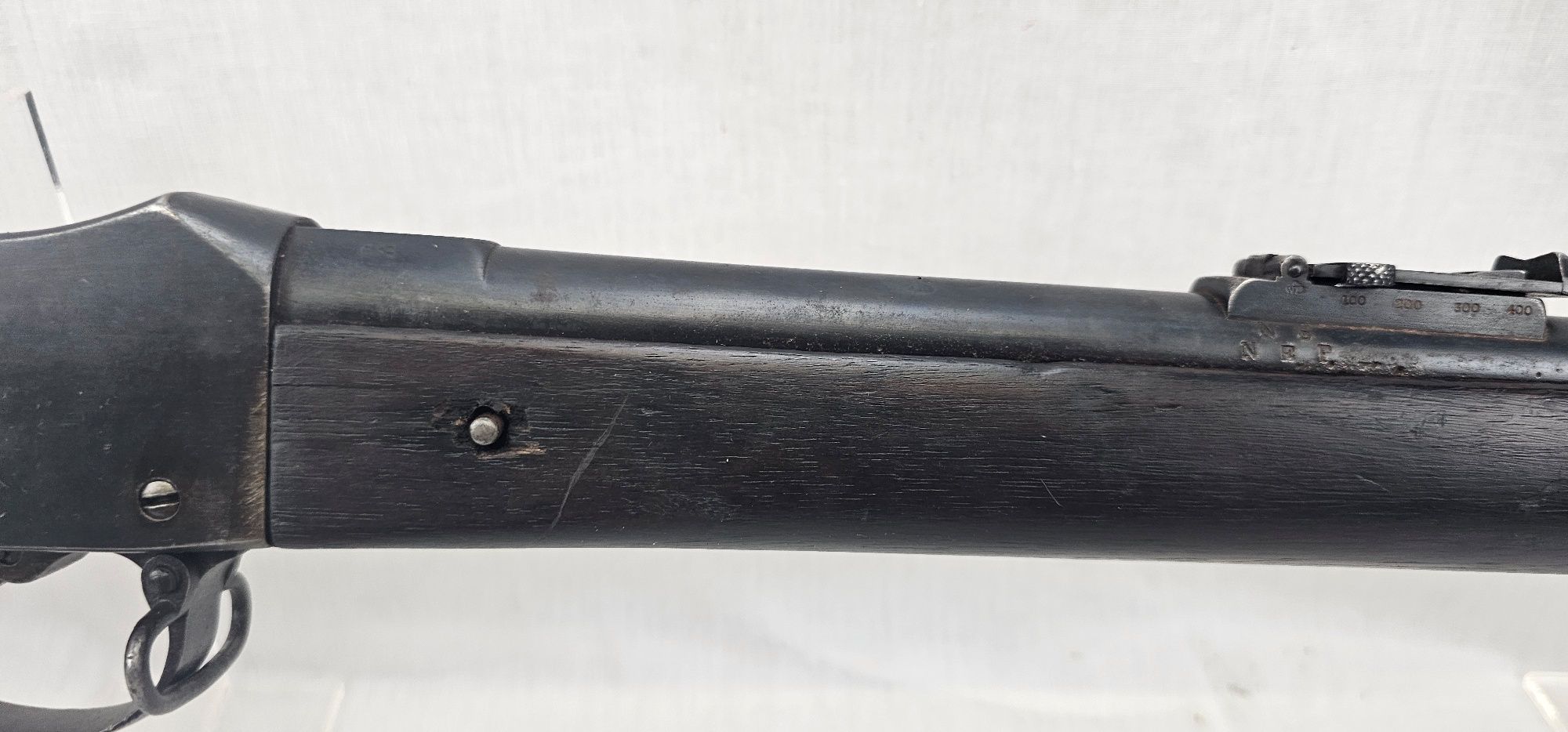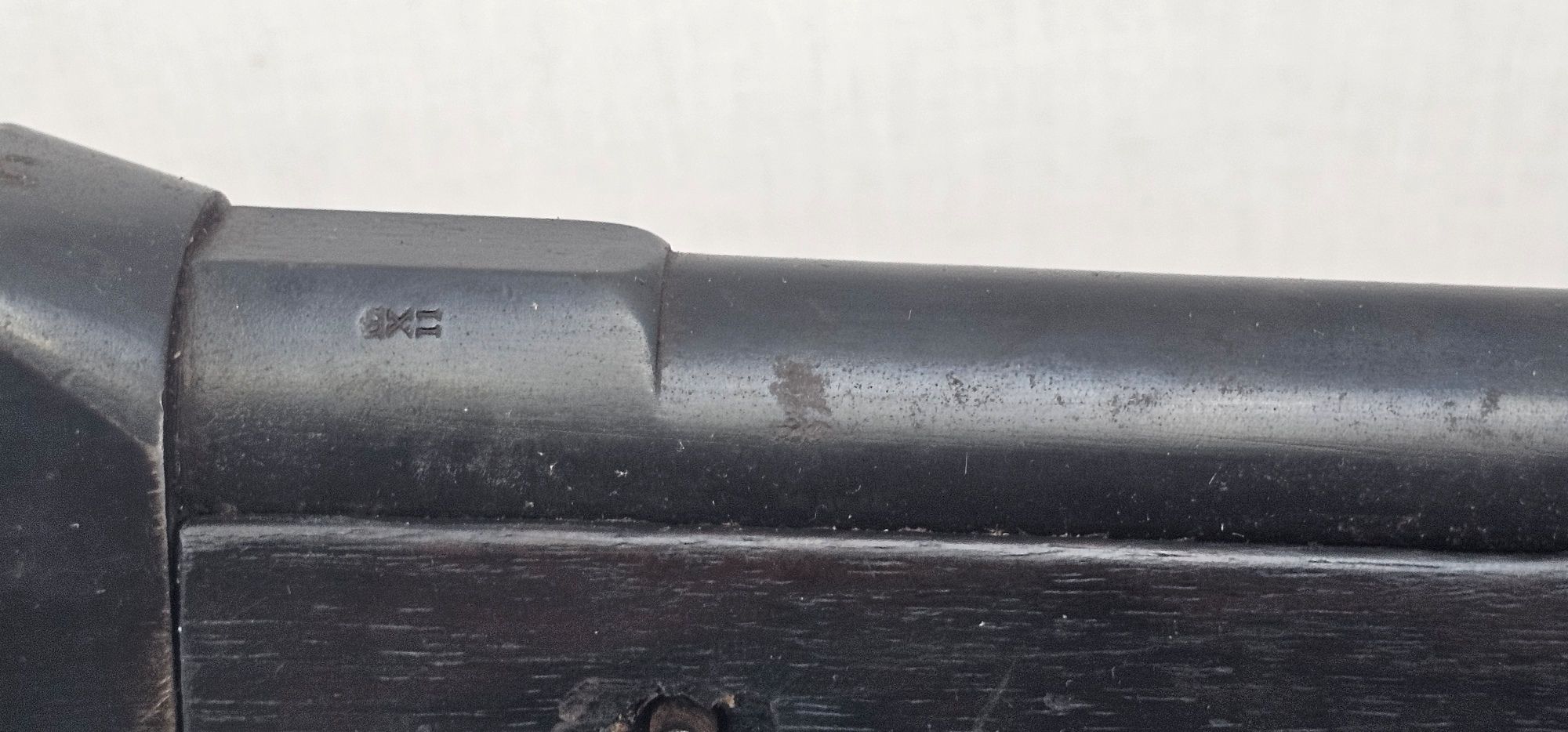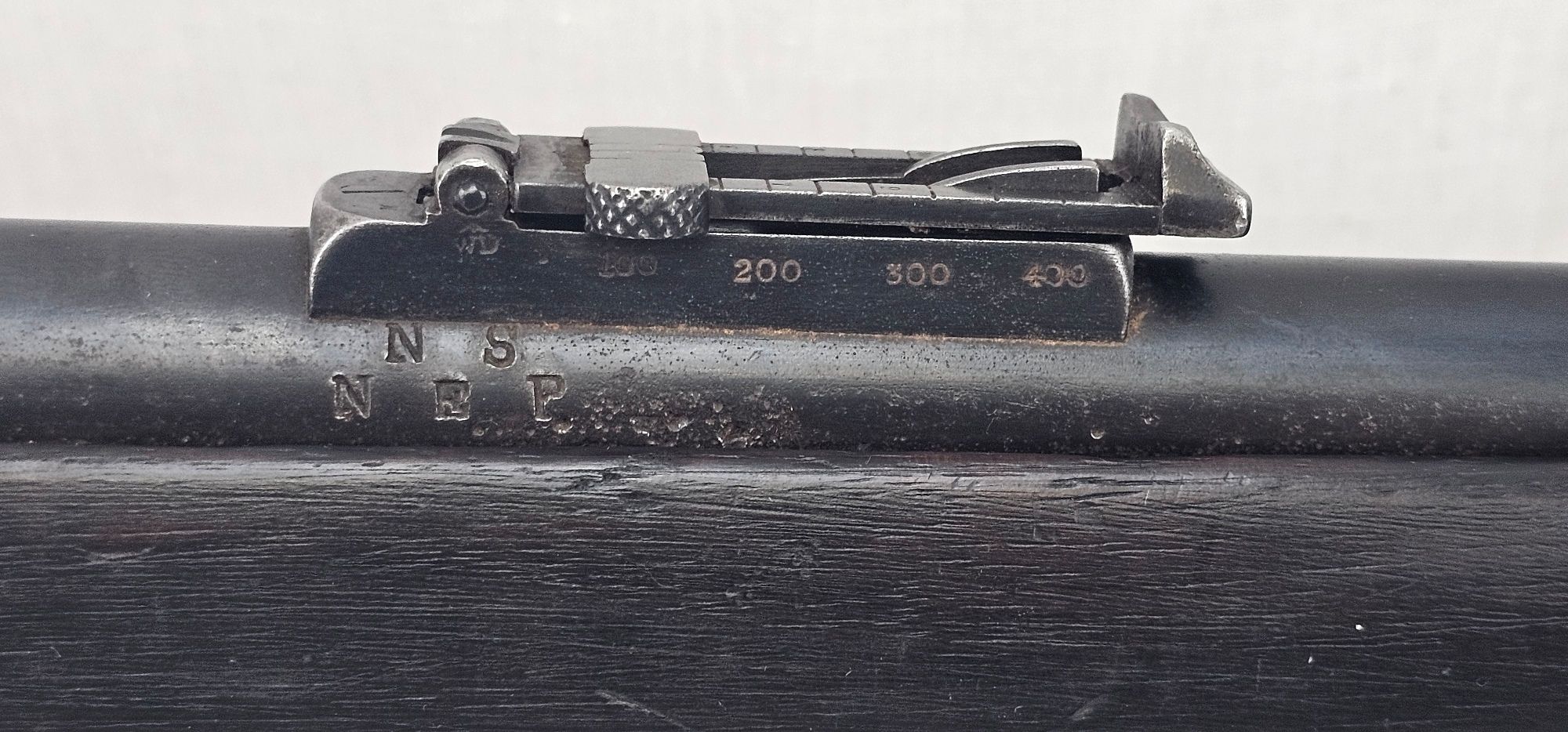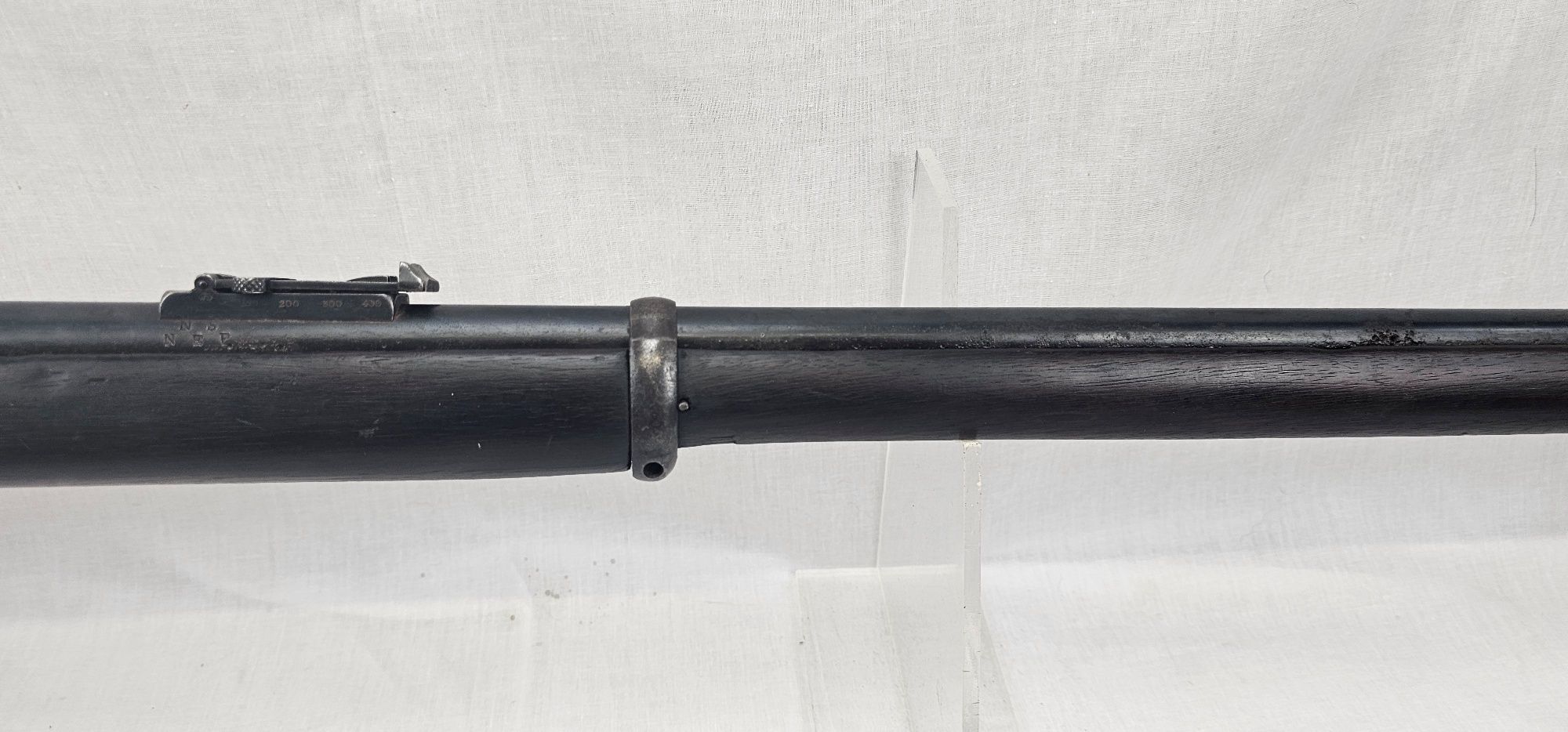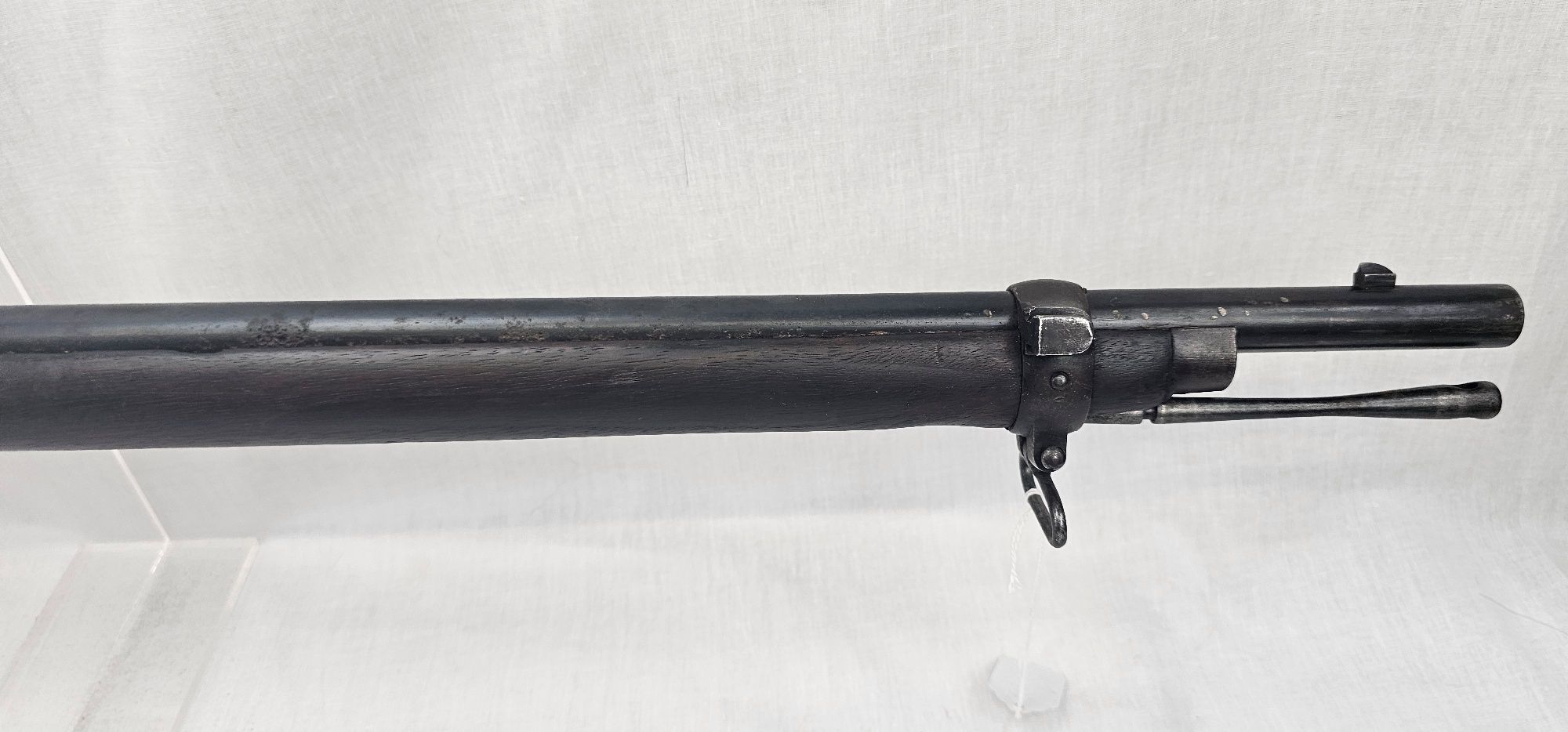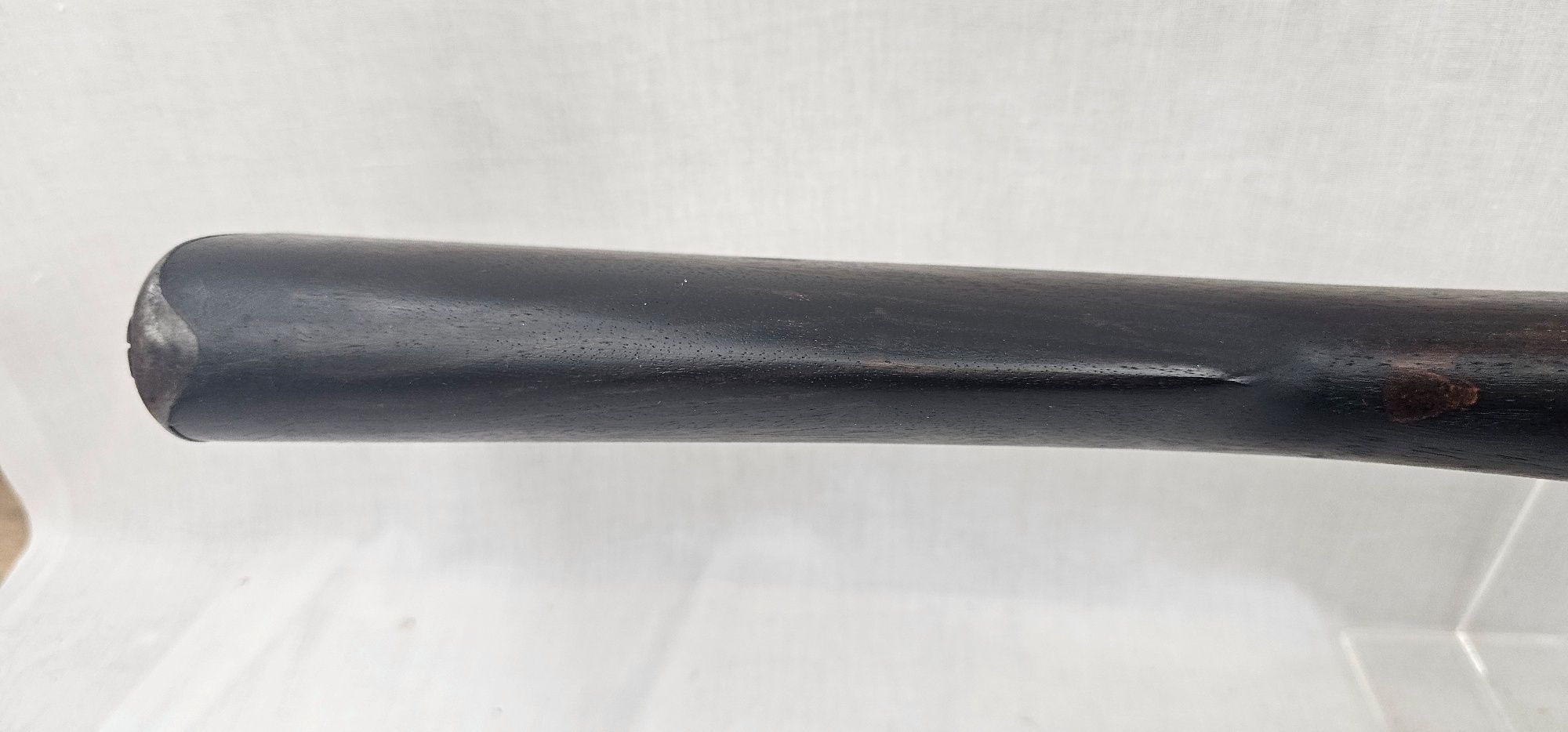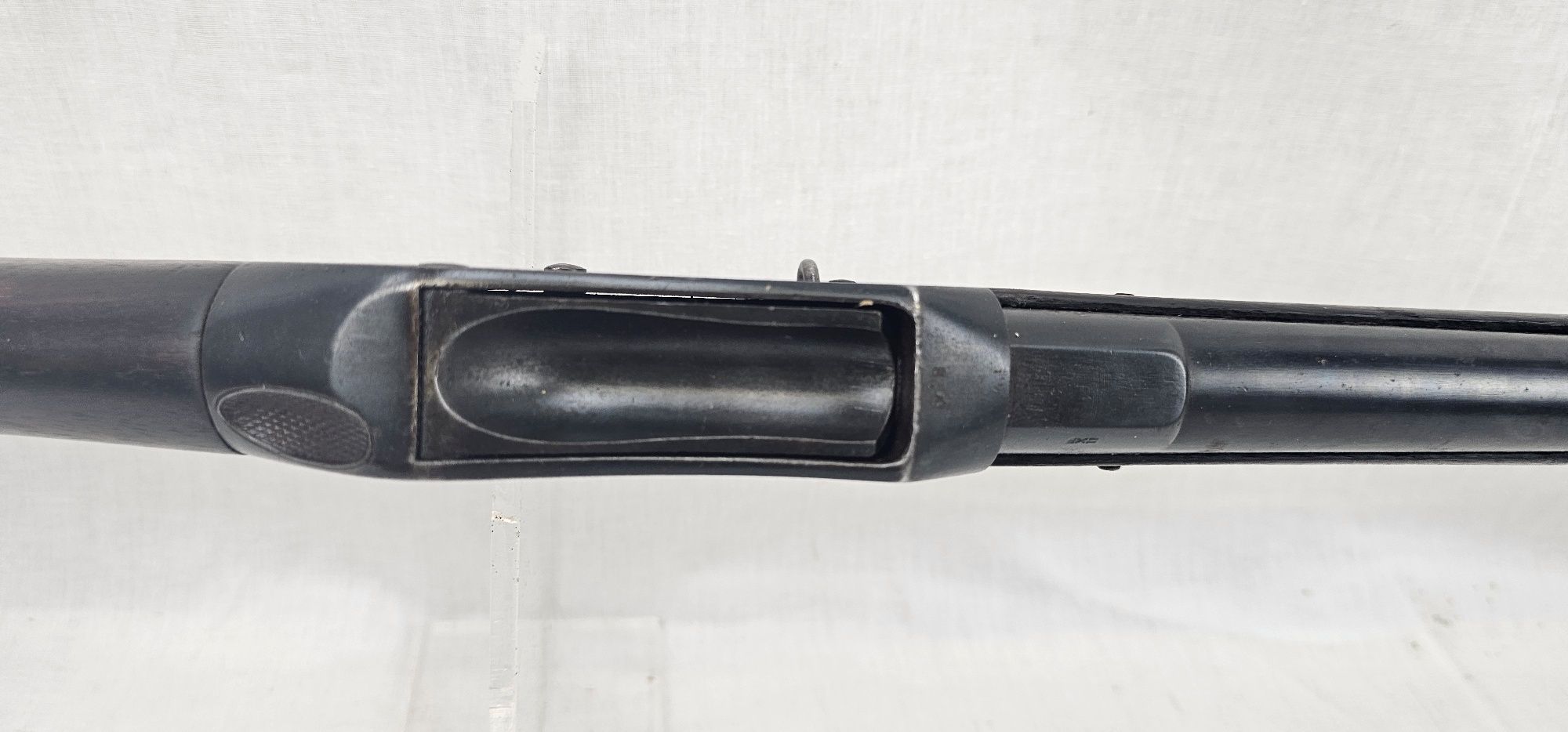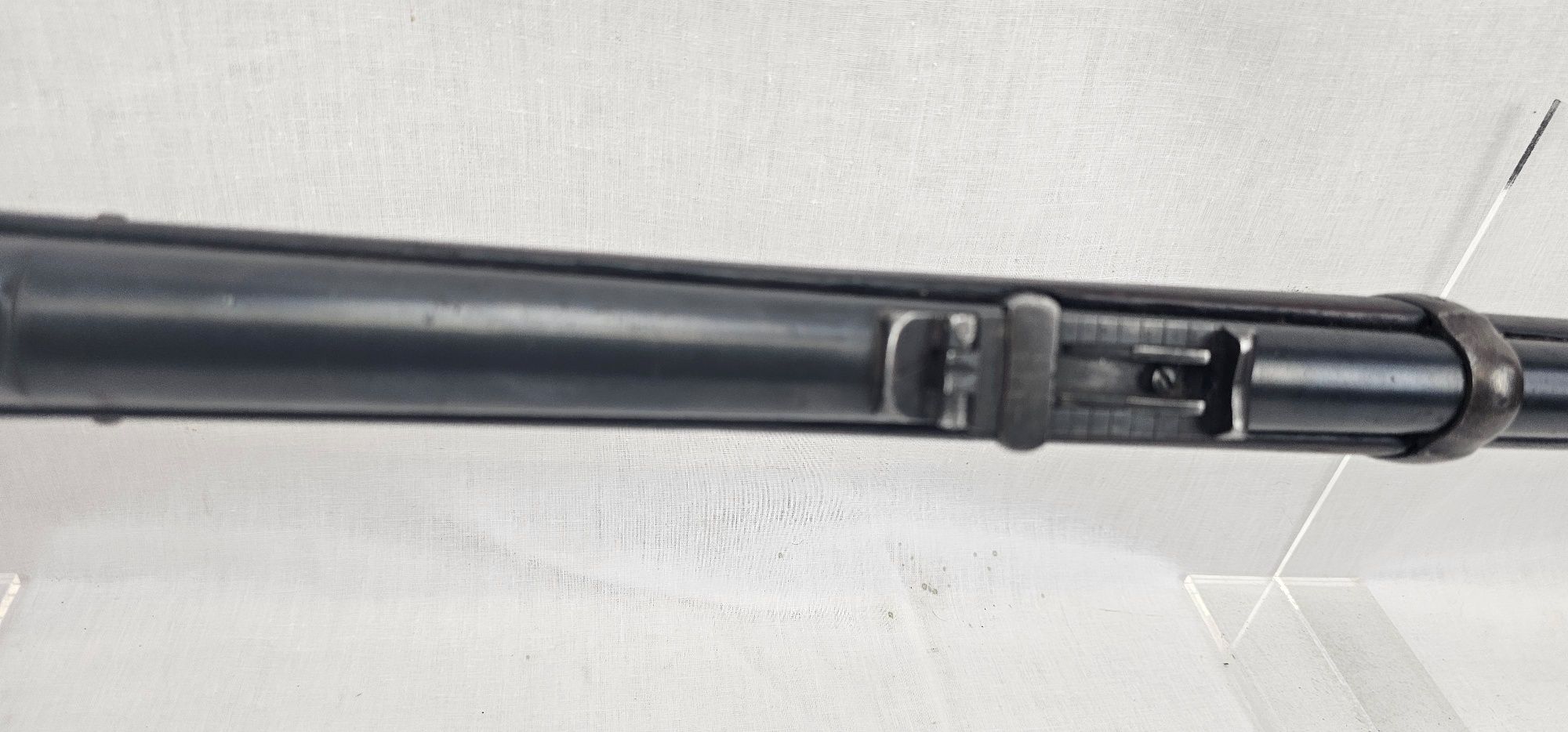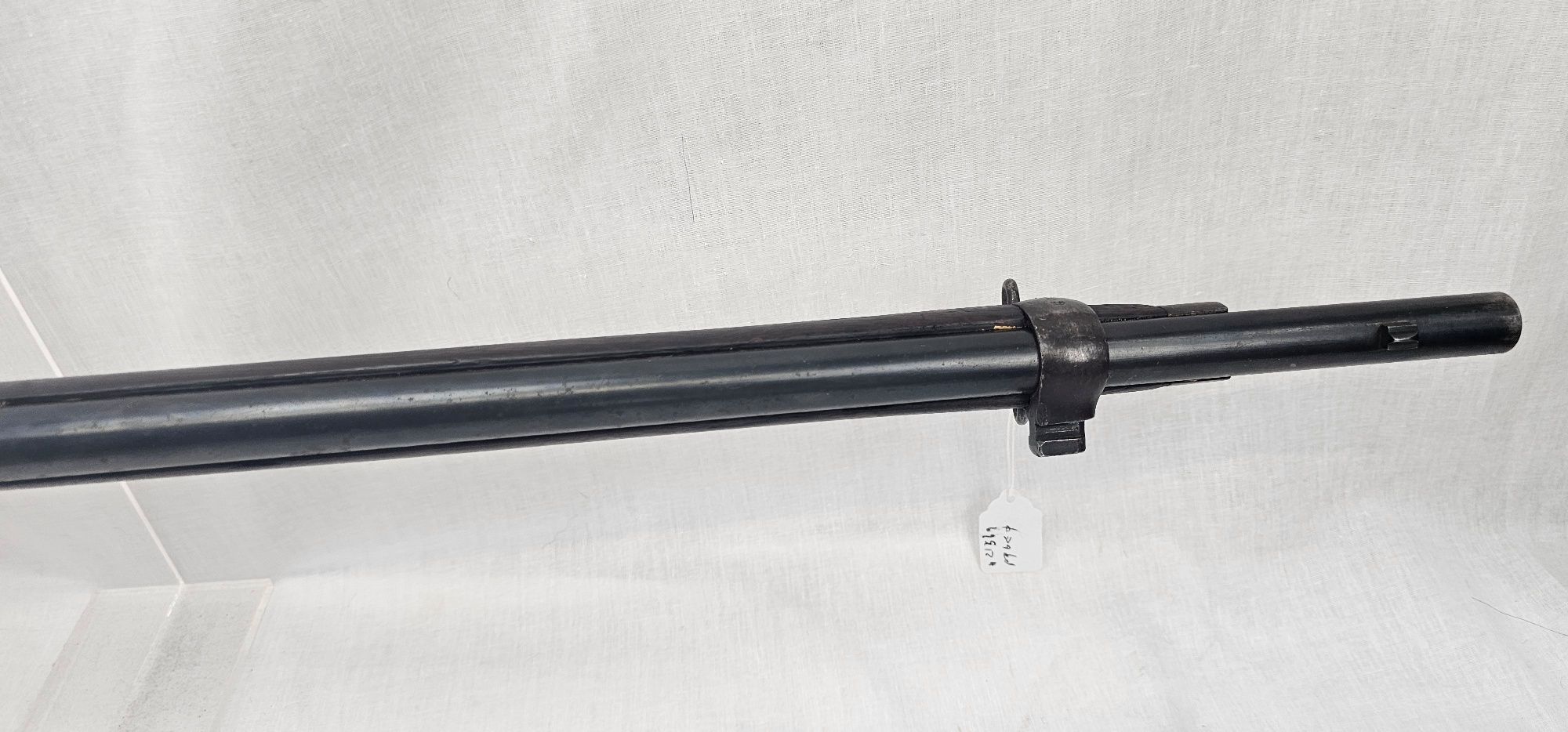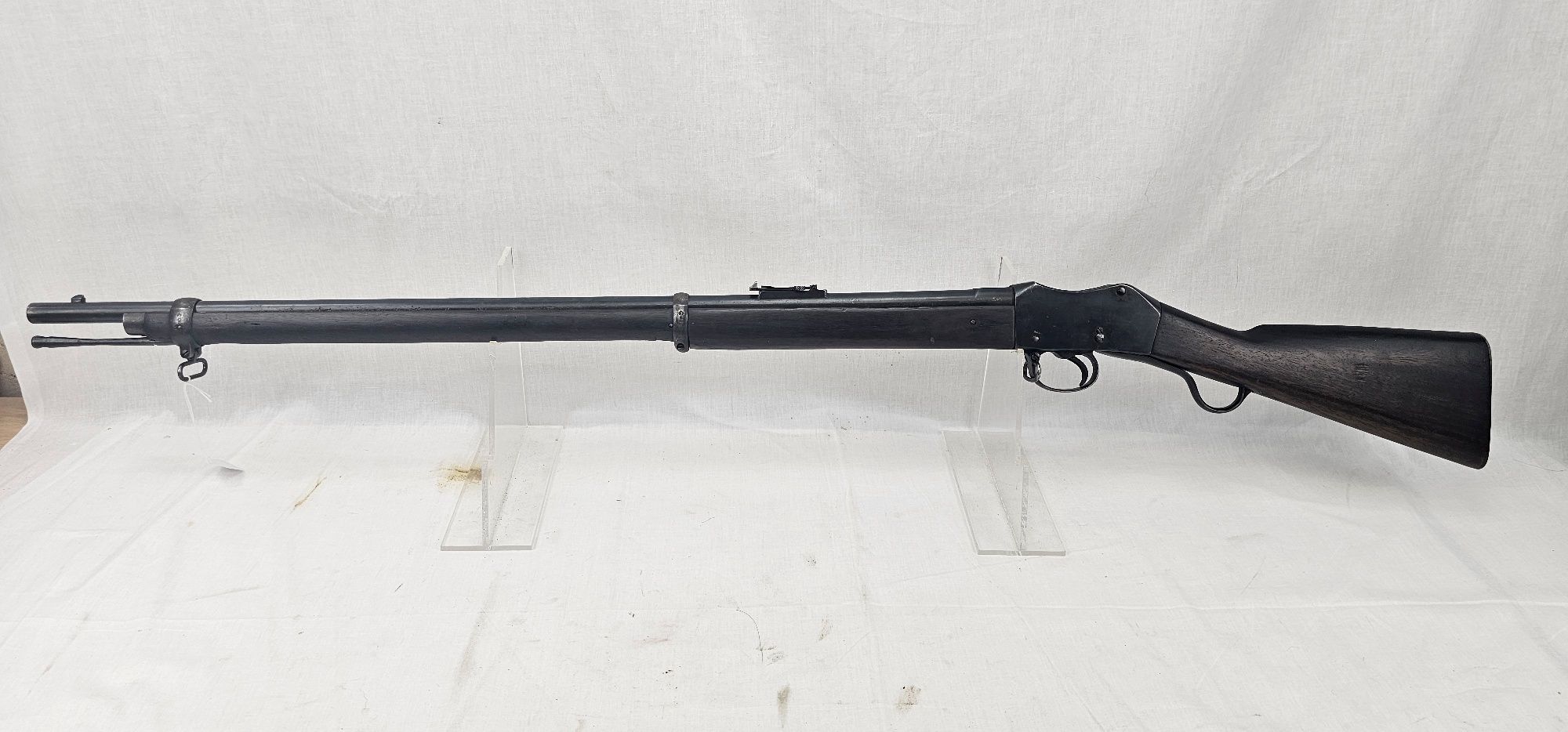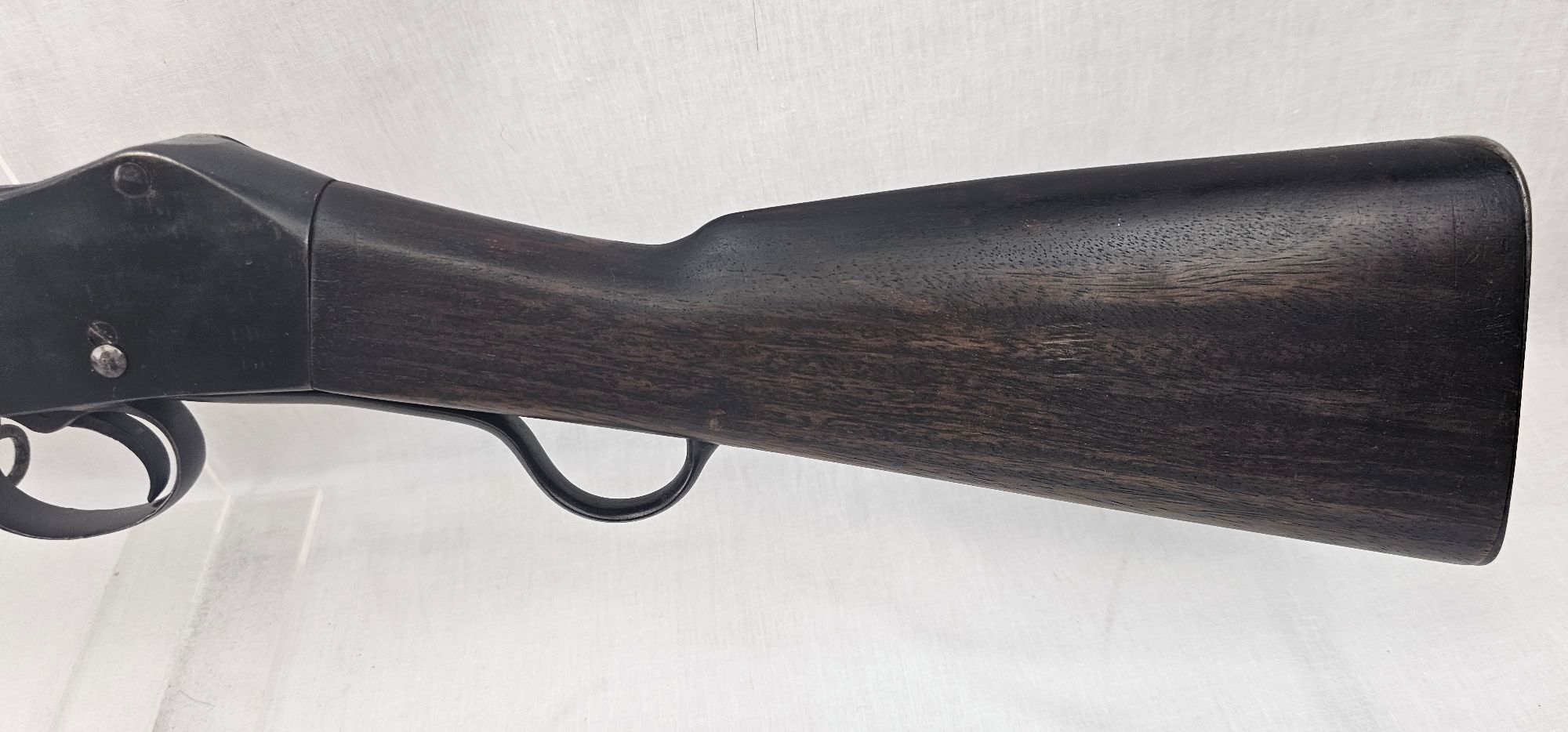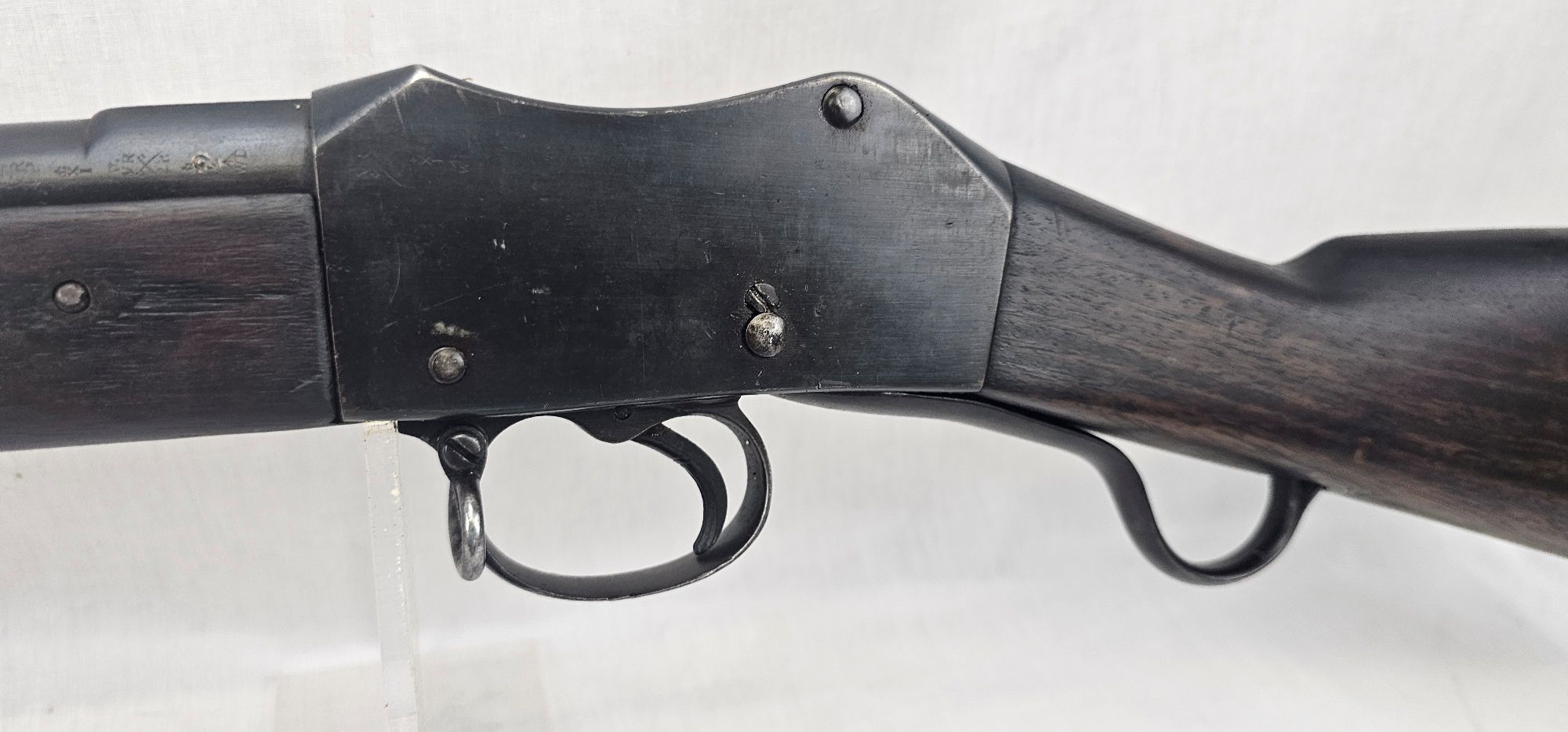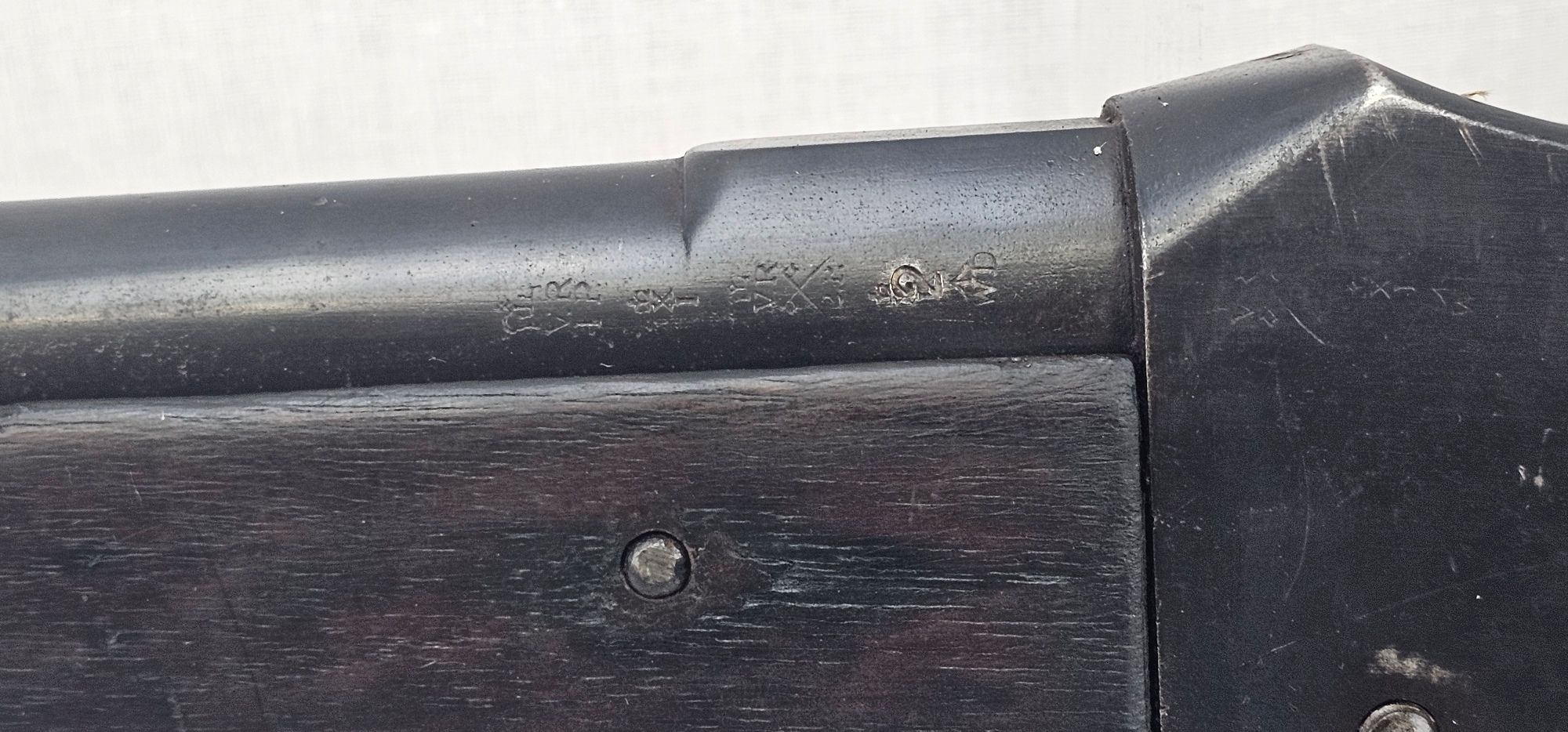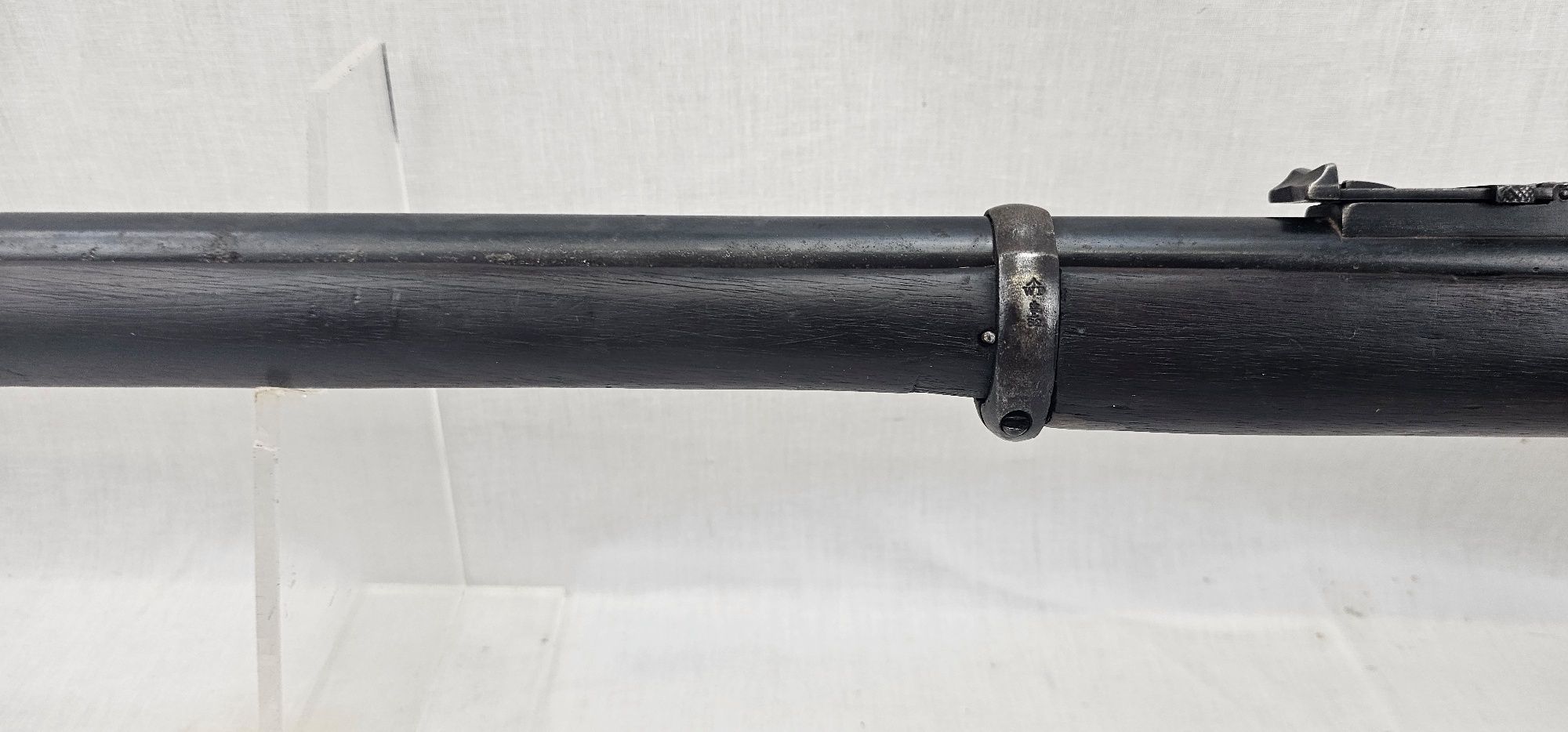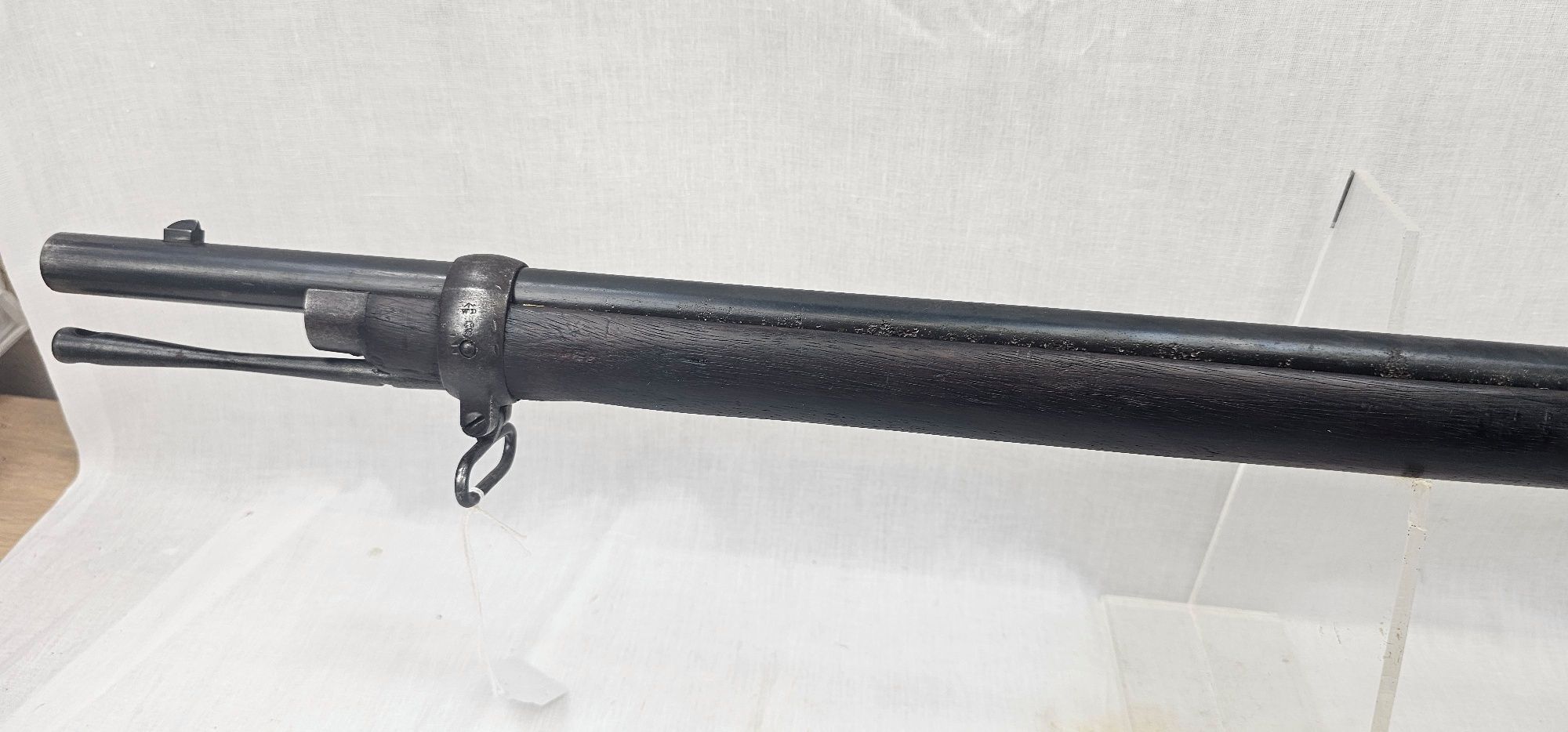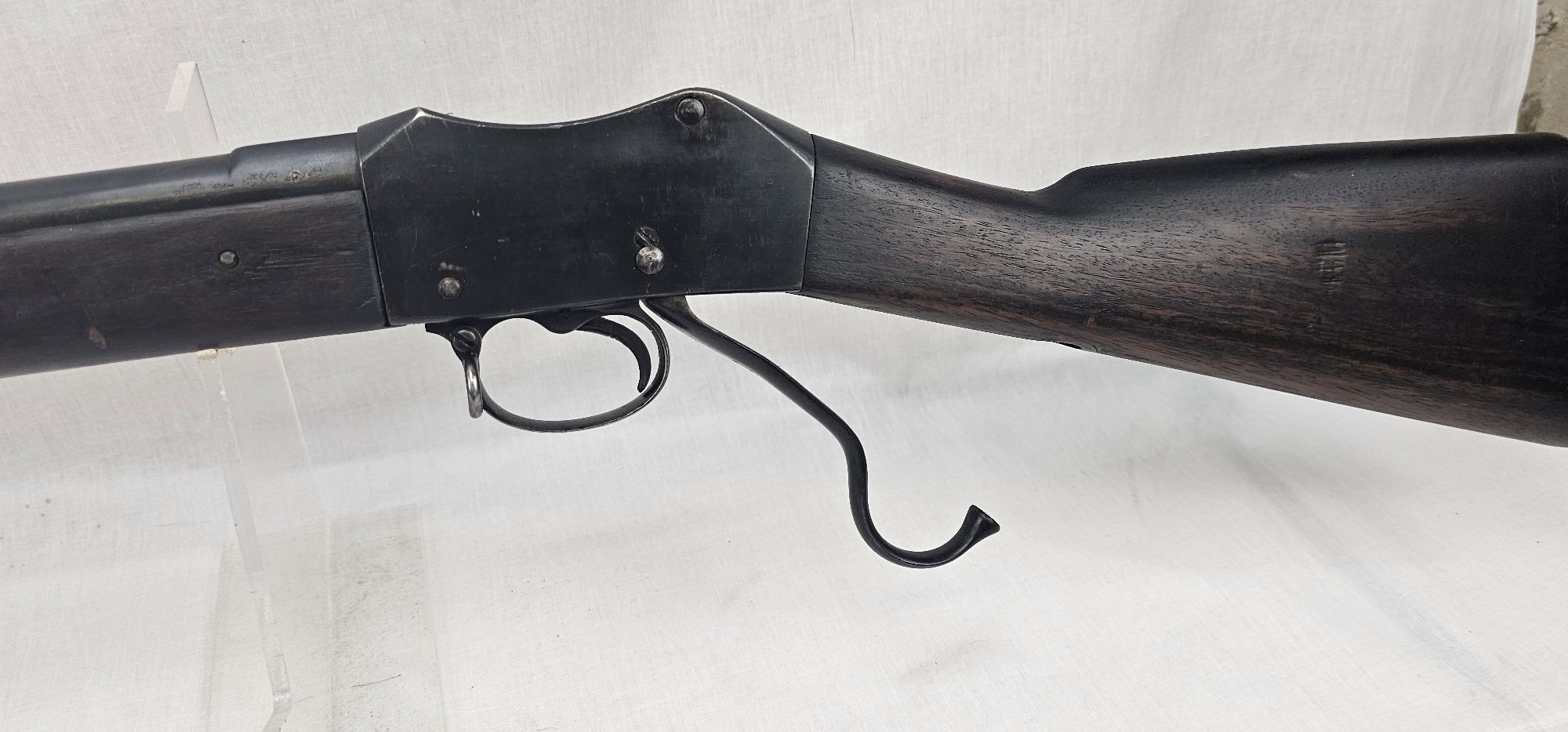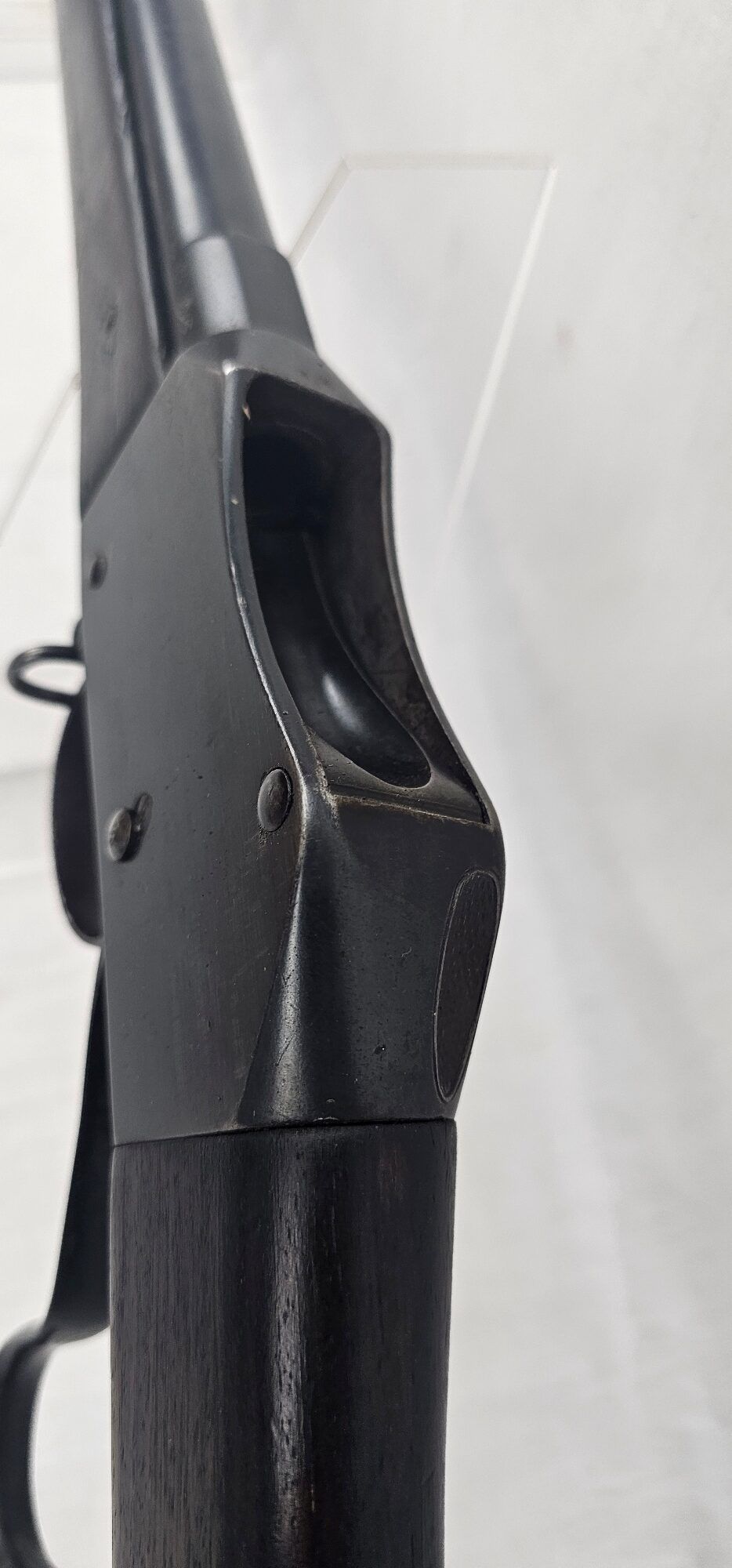~ Zulu War Period LSA 1875 Short Lever Martini-Henry Mk I converted to MK II .577 Cal Rifle ~
The but stock bears a rack stamp and the trigger guard a sepoy mark. All the metal components bear the factory proof marks and inspector’s marks.
The LSA (London Small Arms Co.) 1875 Short Lever Martini-Henry Mk I that was later converted to a Mk II is a historically significant firearm, particularly for its role in the British military during the late 19th century, including its use in the Anglo-Zulu War of 1879. The conversion from Mk I to Mk II reflects the evolution of the Martini-Henry rifle as the British sought to improve its performance in combat.
~ Condition ~
Because is an obsolete caliber the rifle cocks and fires as it should. All the mechanics work just fine.
There is slight pitting on the barrel at the wooden stock level.
Historical Context
London Small Arms Co. (LSA): The LSA was one of the contractors responsible for manufacturing the Martini-Henry rifles, along with other factories like Enfield. The LSA-made Martini-Henry rifles were produced to the same specifications as those from Enfield, but the LSA was a private company contracted to increase production.
Short Lever Martini-Henry Mk I: The Martini-Henry Mk I was the first iteration of the Martini-Henry series, introduced in 1871. The early versions had some shortcomings, particularly with the strength and design of the lever and breech block.
Conversion to Mk II: In 1877, the Martini-Henry Mk II was introduced, incorporating several improvements over the Mk I. Older Mk I rifles, like the LSA 1875 short lever models, were often converted to Mk II specifications rather than being discarded, especially during the lead-up to the Zulu War. These conversions allowed the British Army to field more rifles with the updated features.
Key Features and Differences: Mk I vs. Mk II
Short Lever Design: The original Mk I design featured a shorter lever, which made operating the breech block more difficult, especially under combat conditions. This shorter lever required more force to cock the action, leading to complaints from soldiers.
The Mk II version introduced a longer lever, which provided better leverage, making it easier and faster to operate. Many Mk I rifles were retrofitted with this longer lever during their conversion to Mk II specifications.
Breech Block and Strength Improvements: The Mk I rifles had issues with the breech block becoming worn or unstable after extensive use. This was a significant problem, especially given the high pressures generated by the .577/450 cartridge. The Mk II addressed these issues by strengthening the breech block and modifying its locking mechanism.
Firing Pin and Extractor Mechanism: Another point of improvement in the Mk II was the firing pin and extractor mechanism, which were redesigned to be more reliable and durable. The extractor in the Mk I could sometimes fail to eject spent cartridges efficiently, especially after heavy fouling from black powder. The Mk II conversion included a more robust extractor system.
Stock and Furniture Modifications: The stocks of the converted rifles were often reinforced, and the fittings were improved to handle the stress of prolonged use in harsh environments, such as those in colonial Africa.
Caliber and Ammunition
The .577/450 Martini-Henry cartridge was used throughout the series, including the converted Mk I rifles. This bottlenecked cartridge fired a .450-inch bullet from a .577-inch brass case, loaded with black powder. It was known for its significant stopping power, though it produced considerable recoil.
Service in the Anglo-Zulu War (1879)
Role in the Zulu War: Converted Martini-Henry Mk I rifles, including those made by LSA, saw action during the Anglo-Zulu War. These rifles were in the hands of British soldiers during key engagements, including the infamous Battle of Isandlwana and the Defense of Rorke’s Drift. Despite being outnumbered, the Martini-Henry’s powerful stopping power was critical in holding off Zulu charges.
Practical Challenges: While the rifle had a relatively high rate of fire for a single-shot weapon (10-12 rounds per minute), soldiers faced several practical challenges, especially in the heat of battle. The rifle’s tendency to overheat and jam after prolonged firing was a notable issue, exacerbated by the black powder fouling. Despite this, it was a superior weapon to the muskets and older rifles it replaced.
Markings and Identification
Converted rifles often bore a mix of markings. The original LSA manufacturer’s stamp from 1875 would still be visible, along with the date of manufacture. However, conversion stamps and inspection marks indicating the rifle’s upgrade to Mk II status would also be present, typically added in the late 1870s or early 1880s.
Technical Specifications (Post-Conversion)
Action: Single-shot, lever-action, falling block (Martini-type).
Caliber: .577/450 Martini-Henry.
Barrel Length: Approximately 33.22 inches (84.38 cm).
Overall Length: Around 49 inches (124 cm).
Weight: About 9.5 pounds (4.3 kg).
Sights: Adjustable ladder rear sights, graduated for ranges up to 1,200 yards.
Significance and Legacy
The LSA-made Martini-Henry Mk I rifles, especially those converted to Mk II specifications, represent an important period in British military history. The Martini-Henry, in its various forms, became synonymous with British colonial expansion and imperial warfare.
The rifle’s iconic status was cemented by its role in battles like Rorke’s Drift, where it contributed to the legendary defense against overwhelming Zulu forces. The story of the Martini-Henry continues to capture the imagination of military historians and collectors alike.
Today, Martini-Henry rifles, including converted LSA 1875 short lever models, are sought after by collectors for their historical significance, particularly those with documented use in the Zulu War.


